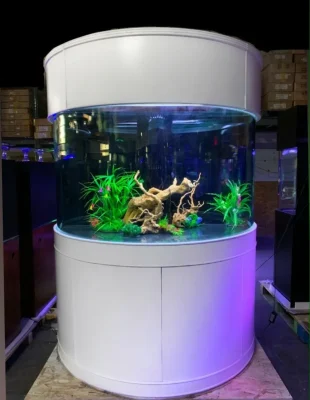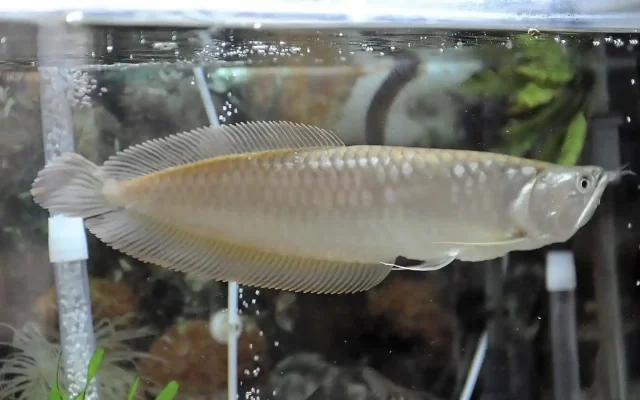Discover the Mystique of Arowana: An Enthralling Introduction to the Majestic Dragon Fish
Arowana 101: Everything You Need to Know About the Dragon Fish
Arowana fish, also known as “dragon fish,” are renowned for their beauty, cultural significance, and unique characteristics. This guide explores their history, types, habitat, care, feeding habits, health, legal considerations, and cultural impact.
History and Background
Origin of Arowana Fish
- Origins: Tropical regions of South America, especially the Amazon River basin.
- Adaptations: Evolved in densely vegetated waterways with unique physical and behavioral traits.
Cultural Significance in Asia
- China: Symbols of prosperity, good luck, and wealth.
- Ownership: Prized by affluent individuals and business owners; some specimens fetch high prices.
Evolutionary Traits
- Physical Traits: Elongated bodies, large scales, distinctive barbels.
- Behavior: Ability to jump out of water, sensitive lateral line system.

Biogeography and Speciation
|
Genus |
Species |
Distribution |
|
Osteoglossum |
O. bicirrhosum |
South America |
|
O. ferreirai |
South America |
|
|
Scleropages |
S. formosus |
Southeast Asia |
|
S. jardinii |
Australia |
|
|
S. leichardti |
Australia |
Prehistoric Features
Prepare to be stunned! Arowanas flaunt:
- Elongated torpedo bodies
- Metallic, enameled scales
- Extending jaws with fang-like teeth
- Billowing fins for elegant swimming
Sizes range from 2-4 feet. Their dinosaur-like presence demands attention.
Why Get an Arowana?
Cultural Significance
Asians revere arowanas symbolizing prosperity, luck, and spiritual protection. Legend states keeping one at home wards off evil.
Visual Splendor
Each arowana’s distinct colors and animated fins make them aquatic artworks. Witnessing these dragons in person is unforgettable.
Clever Behavior
Don’t underestimate arowana intelligence! They interact, learn routines, and some even perform tricks like feeding by hand.
Mastering Arowana Care
Tanking the Beast
- Minimum: 180 gallons for one, 250+ for pairs
- Ample length and open swimming space
- Smooth decor avoiding snagged fins
- Sand substrate
Water Wisdom
- pH 6.8 – 7.5
- 76-84°F
- Moderate hardness
- Pristine via strong filtration & frequent water changes
Feeding Frenzy
Carnivorous cravings mean varied meaty meals:
- Live feeder fish (ideal)
- Frozen shrimp, krill, silversides
- Quality pellets/sticks
Daily feeding satisfies their hefty appetites.
Types of Arowana
| Type | Description | Image |
|---|---|---|
| Super red Arowana | Known as the dragon fish; revered in Asian folklore. Comes in red, gold, green, and blue. |  |
| Silver Arowana | Popular in South America; sleek silver body; known for leaping out of water. |  |
| African Arowana | The African arowana or Nile arowana is a species of bonytongue. Despite being called an “arowana”, the African arowana is more closely related to arapaimas, the only other members in the subfamily Arapaimina. |  |
Arowana Habitat and Care
Ideal Tank Setup
- Tank Size: Minimum 150 gallons for juveniles; larger for adults.
- Water Parameters: Temperature 75-82°F (24-28°C), pH 6.5-7.5, hardness 5-15 dGH.
- Filtration: Robust system with mechanical and biological filtration.
- Lighting: Subdued lighting to mimic natural habitat.
Water Quality Maintenance Tips
- Regular Water Changes: Weekly changes of 20-30%.
- Monitor Parameters: Use reliable test kits.
- Feeding Practices: Avoid overfeeding; offer a varied diet.
Suitable Tank Mates
- Compatible Species: Large, peaceful fish like Oscars, large catfish, and similar cichlids.
- Avoid: Smaller or timid species to prevent stress and aggression.

Feeding Habits and Nutrition
Dietary Requirements
- Diet: Live, frozen, and prepared foods including small fish, shrimp, crickets, earthworms, high-quality pellets.
- Variety: Ensure a diverse diet for nutritional balance.
Feeding Schedule
- Frequency: Feed adults once or twice daily.
- Portion Control: Feed only what they consume in a few minutes.
Common Feeding Issues
- Refusal to Eat: Check water quality; offer various foods.
- Finicky Habits: Experiment with different foods.
- Aggressive Behavior: Feed separately or use feeding rings.
Territorial Tendencies
Arowanas fiercely guard territory from tankmates. Proper housing minimizes aggression. Pairs often conflict.
Brain Power
Ranked among freshwater’s smartest, arowanas recognize owners, follow routines, and can even be trained!
Jumping Jacks
An erratic jumping habit helps escape predators in the wild. But at home, it demands a tightly sealed tank lid.
Keeping Arowanas Healthy
Common Concerns
Watch for these potential issues:
- Hole-in-the-head
- Fin/tail rot
- Hexamita
- Velvet
- Lymphocystis
Top-notch water quality prevents most problems.
Quarantine Caution
Always quarantine new arowanas for 2-4 weeks. Closely monitor and treat any ailments before entering the main tank.
Breeding Impossibilities?
The fry’s precise needs make home arowana breeding nearly impossible. Most hobbyists obtain captive-bred juveniles instead.
Legal Limitations
Many areas require permits or ban arowana ownership entirely to protect this endangered species from irresponsible releases. Research and obey all local exotic pet laws.
Myth or Must-Have?
Undoubtedly, arowanas demand dedication few hobbyists can match. But for those willing, the prehistoric prowess and personalities of these living dragons deliver an experience like no other!

Health and Disease Management
Common Health Issues
- Infections: Fungal, bacterial, parasitic.
- Stress-Related Illnesses: Fin rot, ich, dropsy.
Symptoms and Prevention
- Watch for Signs: Abnormal swimming, lethargy, loss of appetite, lesions, rapid breathing.
- Preventive Measures: Maintain water quality, quarantine new fish.
Treatment Options
- Isolation: Quarantine affected fish.
- Medications: Use medicated baths, antibiotics, antifungals, salt baths.
- Consult a Veterinarian: If unsure or if the condition worsens.
Legal Considerations and Conservation Efforts
Regulations
- Ownership and Trade: Subject to strict regulations for endangered species.
- Laws: Control import, export, and trade to prevent overexploitation.
Conservation Status
- Endangered Species: Asian Arowana and others due to habitat loss, overfishing, illegal collection.
- Efforts: Habitat restoration, regulatory enforcement, community engagement.
Responsible Ownership
- Ethical Sourcing: Obtain from reputable breeders or licensed dealers.
- Avoid Illegal Trade: Purchase from certified sources.
- Education and Advocacy: Promote conservation and sustainable practices.
Arowana in Mythology and Culture
Mythological Significance
- Chinese Mythology: Symbol of wealth, prosperity, and good fortune.
- South American Tribes: Sacred creatures with mystical powers.
Symbolism
- Strength and Resilience: Majestic appearance, predatory nature.
- Feng Shui: Auspicious symbol of wealth and abundance.
Cultural Practices
- Hobby and Competitions: Enthusiasts participate in exhibitions; prized specimens are valuable.
- Rituals and Ceremonies: Releasing Arowanas during auspicious occasions for prosperity.
Conclusion
Understanding Arowana fish involves appreciating their history, habitat, care requirements, feeding habits, health management, legal status, and cultural significance. Responsible ownership and conservation efforts are essential for their well-being and preservation.
FAQs
How long do arowanas live?
20-35 years, potentially over 50 with diligent care!
Safe with other fish? Generally no due to size and predatory nature. Only try largest, robust tankmates.
Child-friendly? Supervise any child interactions. Mishandling risks injury from powerful jaws.
What do arowanas cost?
$50-300 for common green varieties. Super reds frequently $500-2000+.
Outdoor ponding? Rarely advised since temperatures fluctuate and escapes could establish invasive populations.


 Deutsch
Deutsch